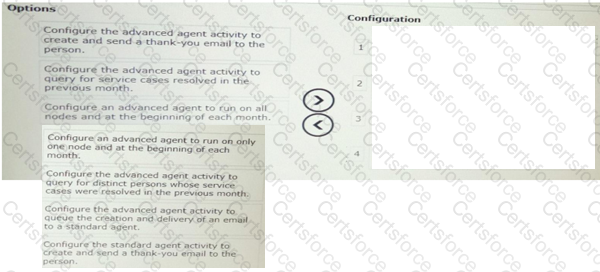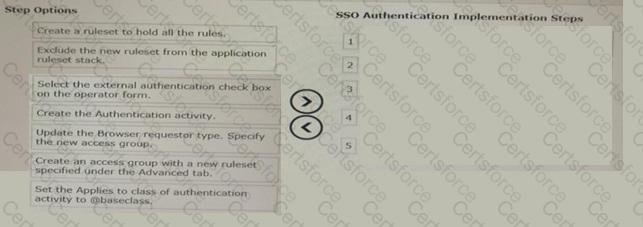An application include two case types: expense report and purchase requests which two steps are required to enable support for both case type for offline user on a mobile device ?
XYZ corp has requirement to send an email to every person who has used a certain service in the previous month thanking them for doing business with XYZ. Generating and sending these emails take a certain amount of time XYZ wants these email processed as quickly as possible to avoid interfering with emails sent during business hours.XYZ also wants to ensure that the thank-you email is not sent to the same person twice

An application consisting of a single case requires sending correspondence at a designated time with minimal delay. The existing solution uses an assignment to pause the case until an SLA invokes the escalation activity that sends the correspondence. Occasionally there is a delay in sending the correspondence.
Which two factors contribute to the delay? (Choose Two)
XYZ Corp users are experiencing delays in the application that you suspect is related to the database
Which two options do you recommend to isolate the issue? (Choose Two)
you want to expose a set of services for your application. Each service should be exposed as a separate WSDL. How do you accomplish this?
Select and move the five steps required to implement single sign-on (SSO) authentication in a pega application to the SSO authentication implementation steps column. (choose five)

Identify three rule types that are used in defining Authentication Service data instances. (Choose Three)
You want to avoid creating unnecessary case-related properties and views. Which three actions do you take to accomplish this goal? (Choose Three)
What two recommendations do you provide to the development team to ensure the performance of the Pega application does not degrade over time? (Choose Two)
MyCo.com has instances of SCM-F5, SmartDispute, and CPM-F5 in their Production Environment distributed across multiple Pega instances. A new business requirement states that users working in any one application cart create a case in any other application.
What is your recommendation to implement the new business requirement?